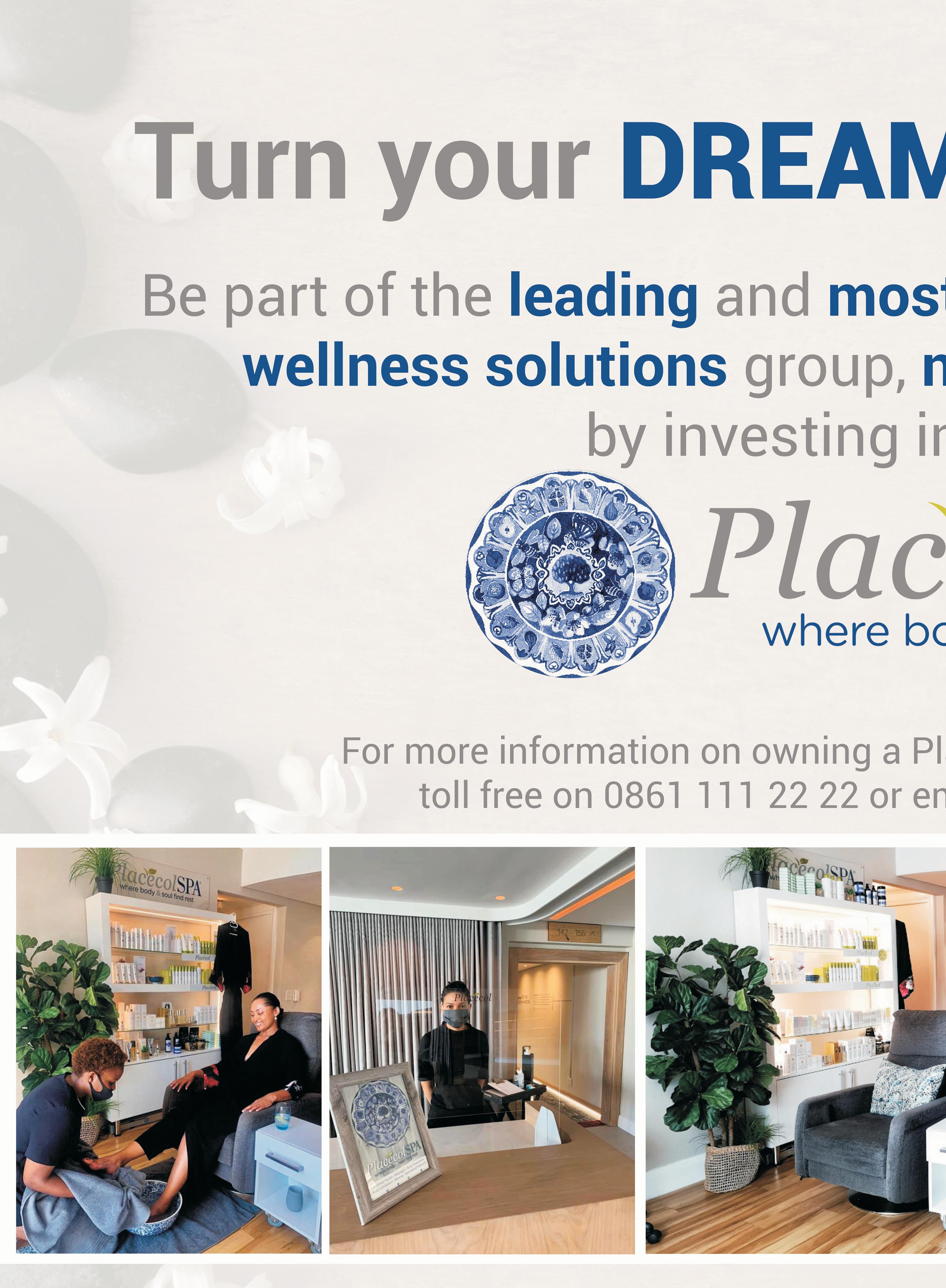
8 minute read
Dispelling Ageist Myths In The Workplace

The “Fitness Market” Is Far Bigger Than Gyms and Boutique Studios
Advertisement
By Katherine Johnston and Opheli Yeung, GWI
Physical activity is intrinsic to wellness, and it is no surprise that fitness has long been a major segment and a key driver of the wellness industry. In Move to be Well: The Global Economy of Physical Activity, GWI estimated that global consumers spent an estimated $108.6 billion (an average of $384 per participant) on doing fitness activities in 2018. When most people think about “fitness,” they probably think of memberships in gyms and health clubs or boutique studios. But the fitness market is far broader than just paid memberships or classes at commercial gyms, health clubs and studios.
GWI estimates that 3.7% of the world’s population are members of gyms, health clubs and fitness studios and/or participate in structured or independent fitness activities or classes on a regular basis.
GWI’s measurement of fitness participation is much broader than just the number of paying members at commercial gyms and health clubs, who only represent a portion of the market. We include membership and participation in a variety of other types of gyms and fitness classes—in public, nonprofit, university, hotel, outdoor, home, and other settings, both free and paid—as elaborated on below.
People do fitness activities in a wide range of venues. GWI estimates that in 2018, about 190 million people were members of private/commercial gyms and fitness facilities across nearly 258,000 locations in 211 countries. This is what most studies generally consider to be the extent of the “fitness market.”
However, there are many other ways to participate in fitness, and not all of them require monetary expenditures. Note that all data discussed here are from 2018, and this landscape has shifted dramatically during the COVID-19 pandemic—with even greater movement toward independent, outdoor and nongym-based fitness activities.
• An additional 33.8 million people utilize public, nonprofit and public-private gyms and fitness facilities across more than 26,000 locations, typically with low or subsidized membership fees. These include:
1. Government-subsidized (but often privately run) gyms and leisure centers in the United Kingdom, Ireland, Spain, Australia and New Zealand;
2. Public and city-run gyms and community centers in Japan, United States, Canada, Singapore and the Nordic countries;
3. Nonprofit facilities such as YMCAs (which primarily offer fitness facilities in the United States, Canada, United Kingdom, Australia, New Zealand and Japan but not in every location around the world;
4. Medical fitness centers (gyms integrated with health care providers, targeting populations with medical conditions, predominantly in the United States).
• GWI estimates that there are over 21,000 free outdoor gyms and venues offering governmentsponsored/free fitness classes. Outdoor gyms (also known as “parques biosaludables” or “calisthenics parks”) are most common across Latin America, Europe, and some parts of Asia (especially in Singapore and larger cities in China and India).
• Approximately 13.7 million people (mostly students and young adults) access gyms and fitness facilities on nearly 14,500 university campuses around the world. • An estimated 3,400 hotels offer public memberships to their fitness centers, serving about 2.3 million members. These gyms are primarily in high-end urban hotels and especially in developing countries. In lower-income countries, hotel gyms are sometimes the front-runner or only fitness offering targeting wealthy elites and expats, before the entry of stand alone commercial gyms.
• GWI estimates that about 103.2 million people work out independently or at home, using treadmills, stationary bikes, weights and other home-based fitness equipment, as well as books, videos and other technologies. Note that a significant portion of this number overlaps with other categories above because many gym members also do workouts at home. Among those doing at-home workouts, an estimated 28.8 million subscribe to on-demand and streaming fitness services (via online platforms and mobile apps).
Note that while GWI’s estimates for the fitness segment primarily focus on gym memberships across different types of facilities, this is not necessarily the best way to assess participation in fitness activities (although it is the most common and feasible measurement given the availability of data across countries). Paying for a gym membership does not necessarily mean that a person is actually going to the gym frequently or participating in classes.
According to IHRSA’s 2018 consumer study, over 12% of Americans with health club memberships use them less than once a month. Another recent study in the United States found that 6.3% of Americans who have gym memberships do not use them at all (data from Finder.com). In fact, many gyms build their business models around a certain portion of members having low usage rates or not using the gym at all.


Dispelling Ageist Myths In The Workplace By Carl Honoré

Last year, a man named Emile Ratelband marched into a court in the Netherlands and demanded the right to change his birthdate. Although he was 69 years old, he wanted to be 49 - at least on paper.
Why erase two decades of his life? One reason, he told the judge, was to boost his chances of landing a job.
Though the media poked fun at him, Ratelband had a point. In a culture enthralled with youth, being older can mean being written off. These days, the word “old” is so toxic that Dame Judi Dench banned its use in her home. When you type, “I lie about my…” into Google Search, “age” is the first response that comes up.
Ageism is especially rife in the workplace. Older employees are often passed over for promotion, discarded first in hard times or fobbed off with unfulfilling work. Job interviews are harder to come by after you hit middle age. Facebook CEO Mark Zuckerberg once said, “Young people are just smarter.”
But is that true? Are older workers a burden? Is the aging population a one-way ticket to plummeting productivity, dwindling innovation and the end of entrepreneurship?
The answer to all three questions is a resounding, “No.”
During the industrial era, putting older workers out to pasture made sense because factory jobs are harder to perform with an older body. But the world has changed.
For a start, we are staying healthy longer. Today, gerontologists report that the average 65-yearold is in better shape than ever before. At the same time, brawn counts less in the modern workplace.
What matters now is brainpower, which in many ways increases as we grow older.
Aging boosts our ability to see the big picture and weigh multiple points of view. When tackling problems in a familiar field, we get better at spotting the patterns and details that open the door to finding a solution.
Companies with suggestion boxes report that older staff generate more good ideas, with the best ones often coming from people 55 and older. Harvard University researchers concluded that four key skills - arithmetic, vocabulary, general knowledge and a grasp of how the world works - do not ripen fully until around the age of 50.
Creativity is certainly not confined to young people. History is studded with artists, from Michelangelo and Matisse to Beethoven and Bach, doing triumphantly creative work in later life. Momofuku Ando invented the instant noodle in his late 40s, Benjamin Franklin was 74 when he invented bifocals and Thomas Edison filed patents until his death at the age of 84. Today, John Goodenough is reinventing rechargeable batteries in his 90s. Maya Angelou was right when she said, “You can't use up creativity. The more you use, the more you have.”
It helps that the world is changing in ways that favor those with more mileage. Many disciplines have matured to the point where future breakthroughs will be made by mastering multiple domains and building upon work done by others. That means relying on two things only aging can confer: time and experience. No wonder Nobel science laureates are having their eureka moments later in life.
Aging also can make us more socially adroit. We often get better at reading people, cooperating, negotiating, putting ourselves in others' shoes, finding compromises and resolving conflicts. That's why productivity rises with age in jobs that rely on social smarts.
Bottom line: The phrase “finished at 40” is nothing more than weapons-grade nonsense. As Peter Cappelli, professor of management at the Wharton School, puts it: “Every aspect of job performance gets better as we age.”
This even holds true when it comes to entrepreneurship.
A study of the 2.7 million new businesses formed in the United States, between 2007 and 2014, reached a conclusion to gladden the heart of anybody on the “wrong” side of 40. Researchers stated: “We find no evidence to suggest that founders in their 20s are especially likely to succeed. Rather, all evidence points to founders being especially successful when starting businesses in middle age or beyond.”
So, who's smarter now, “Zuck?” Let's not get carried away. Aging does take a toll. Older brains are often slower to retrieve certain memories, absorb information and solve math-based problems.
Yet even that is no bar to thriving in the modern workplace. Why? Because most jobs involve multiple forms of cognition, meaning the older brain can use its strengths - such as greater accuracy - to make up for any speed deficit.
One example: In a survey of typists 19-72 years old, researchers found older people typed more slowly yet finished assignments as swiftly as their younger peers. How? They did so by looking further ahead in the text and therefore made fewer mistakes. As the old military adage goes, “Slow is smooth and smooth is fast.”
The truth is that the biggest challenge in the workplace is not aging but ageism.
How can we meet that challenge? Honesty is a good starting point. Lying about your age gives the number a power it does not deserve and reinforces the canard that younger is always better. Instead, own your age - then go out there and show the world what you can do.
And that is more or less the advice the Dutch court gave Ratelband when rejecting his plea for a new birthdate.
About Carl Honoré: A London-based bestselling author and popular TED speaker. His latest book, “Bolder: Making the Most of our Longer Lives,” explores how to age better and feel better about aging that also confronts ageism.












